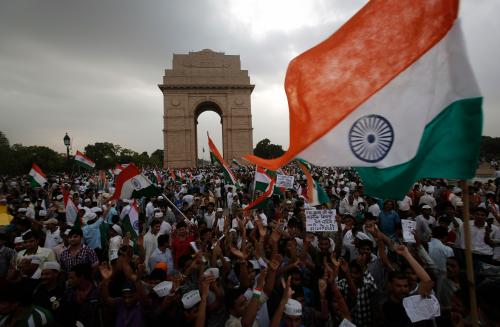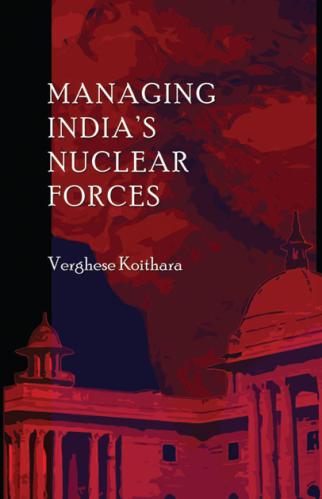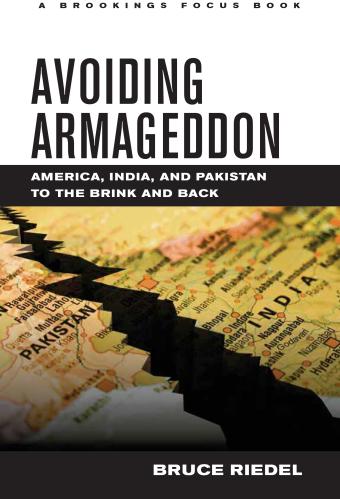Content from the Brookings Institution India Center is now archived. After seven years of an impactful partnership, as of September 11, 2020, Brookings India is now the Centre for Social and Economic Progress, an independent public policy institution based in India.
This memo is part of the Brookings India publication, India-U.S. Relations in Transition. The views are those of the author(s). Brookings India does not hold any institutional views.
Security cooperation today includes both some of the most promising aspects of U.S.-India ties.
For anyone who worked on U.S.-India relations before the big transformation took place at the end of the Cold War, this statement comes as a surprise.
India-U.S. security ties reflect two key strategic convergences. First, Indian and U.S. interests in the Indian Ocean and Asian security are broadly aligned. Both countries want constructive relations with China, neither wants China to be the dominant power in Asia, and both are wary of China’s expanding presence in the Indian Ocean. Indian strategists generally refer to China as India’s biggest strategic challenge, though this is a perspective the government prefers not to articulate publicly as policy. This U.S.-India policy alignment was best illustrated in the joint statement issued by President Barack Obama and Prime Minister Narendra Modi during Obama’s visit to India in January 2015.
Second, India now sees its economy as a source of power. This gives Indian Ocean security a higher profile in India’s strategic outlook. The U.S. role in the Indian Ocean and further east is now regarded as one of the ways of protecting India’s economic future. India’s economic surge starting in the 1990s changed maritime and naval issues from a backwater to one of the lead sectors of the U.S.-India security partnership, and the two countries have just begin an annual Maritime Security Dialogue. This fits in well with the Obama administration’s “rebalance” to Asia, predicated on a network of strong partnerships around Asia, with India as a critical participant.
In keeping with their deepening strategic understanding, the United States and India in July 2015 extended their defence cooperation framework agreement for another ten years. Each successive agreement has expanded the areas for cooperation. This time, the list gave a higher profile to technology transfer and defence co-production, two critical Indian priorities. Remarkably, the proposed Logistics Support Agreement, normally a required feature of U.S. defence trade, which had been given up for dead about two years ago, was revived in a form more palatable to India when Secretary of Defense Ashton Carter visited India in April 2016. The two countries have been working toward projects on aircraft carrier design and operations and jet engine technology. U.S. manufacturers lost a bid to supply a large order of medium multi-role combat aircraft, but defence trade has increased, topping $9 billion between 2008 and 2013.
At the same time, the two countries also have some important differences. Differing views on Pakistan limit the scope of the strategic conversation. For India, Pakistan is the source of its terrorism problem. For the United States, Pakistan is an important, albeit problematic, strategic partner, and a country the U.S. prefers to deal with quite separately from India. In contrast to the broad strategic understanding on China, there is a persistent sense in India that the United States does not fully appreciate India’s concerns about Pakistan and Afghanistan.
The second major obstacle concerns the two countries’ visions of their global role. For the United States, that role starts with leadership. Washington has an expansive view of where its interests are engaged. For India, the cardinal requirements of foreign and security policy are maintaining pre dominance in the immediate region and protecting “strategic autonomy,” thus avoiding excessive entanglement with powerful countries. This makes India ambivalent: enthusiastic about incorporating advanced U.S. technology into its defence setup and about keeping the U.S. friendly in the areas most important to Indian security, but wary of any visible alignment with U.S. policy. This also means that on defence trade, Indian and U.S. priorities are not always in sync: India wants the latest technology while the United States wants to build a defence relationship.
A third challenge is the mismatch between the two countries’ governmental structures dealing with defence. India’s defence purchasing procedures are designed to maximize domestic production and avoid any accusation of corruption – and if that means decisions take years, so be it. The U.S. defence sales arrangements are legally subject to Congressional approval requirements – and hence give rise to the Indian charge that the U.S. is an unreliable supplier. The Indian defence ministry is chiefly a budget-setting and administering organization, separated from the armed services by a firewall that the United States finds hard to understand. The U.S. Defense Department is joined at the hip with the armed forces, and its ways are similarly opaque to Indian observers.
The important parallels between Indian and U.S. national interests will keep pushing the two countries forward, despite these challenges. It will occasionally be a rocky ride. Two recommendations could help the two countries come closer to the potential for this important relationship:
- The United States must show respect for India’s standing as a nation whose civilization is still leaving its mark on the world, and whose commitment to strategic autonomy remains strong. This is the starting point for serious progress in any aspect of U.S.-India relations. Successful U.S. negotiators need to listen before delivering their talking points, and to understand India’s priorities – even if they do not share them. Grand public statements comparing U.S.-India ties with NATO, for example, are likely to be read as a challenge to India’s ability to set its own course.
- The two sides must deepen the U.S.-India dialogue on Pakistan, Afghanistan, and the Middle East. In the short term, the United States and India are unlikely to overcome their different perspectives on these regions. However, a serious dialogue, conducted with honesty and candour, can go a long way toward mitigating the “dialogue of the deaf” that all too often clouds their strategic conversation.








